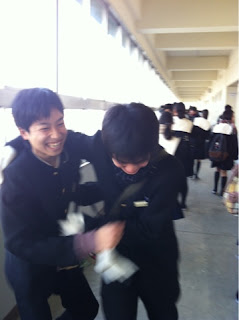In Japan the easiest thing to find is the toilet...simply because it is the same word in Japanese, トイレ.
One of the more common questions I get asked by people from back home is always about the toilet. It seems to be a crowd favorite.
For anyone who doesn't know, a contraption that is frequently called the squatty potty is prevalent in many Asian countries. As my friend Tyler pointed out, it kind of looks like a sled for infants. Allow me to expand, it looks like a porcelain trough planted into the ground. There is a hood and lever at one end. You face this when you do your business. For women, it is a common wasteful practice to always pull the handle to keep the water running.
These types of toilets are cheap and therefore found in any public place that is trying to cut costs. In other words you find them in schools, train and subway stations, on trains ( man that is a good story from Taipei!), public restrooms and even some restaurant restrooms. They are so prevalent, they are pretty difficult to avoid.
Increasingly more common in Japan are the bidets. I believe it is thought that the French introduced this to Japan. Japan seems to like a lot of French things, most of all bread and food. They are fancy partly plastic toilets with a whole remote switch board along the side. These switchboards control everything; how loud the flush; how much water is used; if there is any ...water cleansing needed; how warm the seat is; and it can even make a toilet flushing sound if you are not in a particularly wasteful mood. These are now common in homes and hotels and newer schools and nicer restaurants.
And the last style of irregular not often seen in America) toilet that I have encountered, is the one in my home. It is completely normal except that when you flush it, it also runs water into the upper tank from a facet where you wash your hands. Of course you can opt not to do this and go to your kitchen or bathroom (yes it is different from restroom in Japan) sink to wash your hands; however, if you wish to wash your hands via this contraption, you must flush the toilet.
Also important to note, is that nearly every toilet has marking on the handle: 大 and 小. 大 means big, and the other, 小, means little. I will leave it to what little your imagination needs to process this.
And just so that there is less room for the imagination...
| a cute instructing sign seen on the stall walls of my elementary school |
















